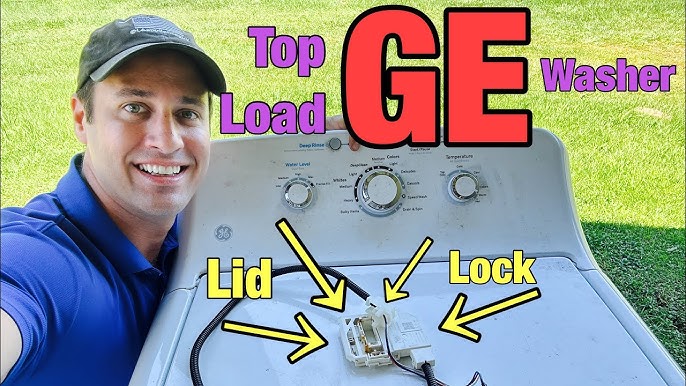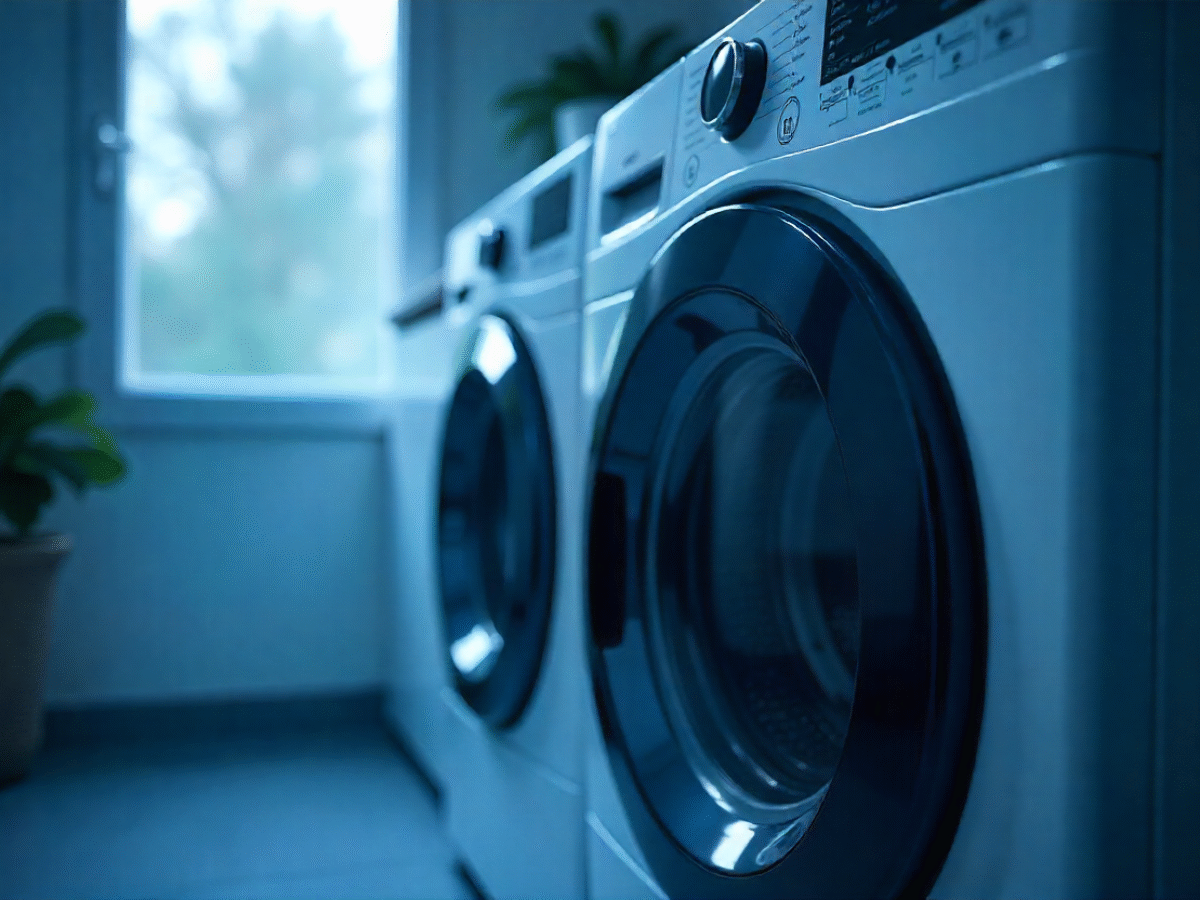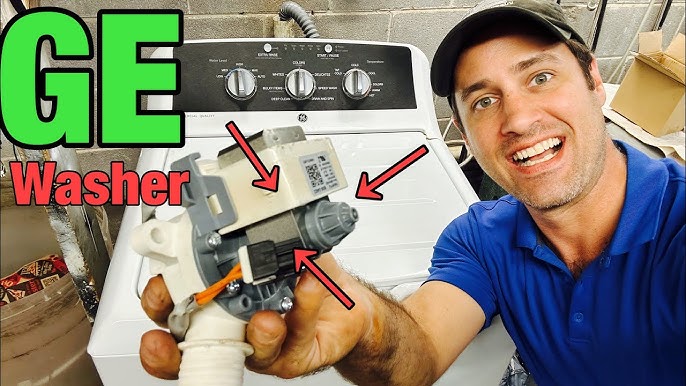Is your GE washer not spinning fast enough? You expect your laundry to come out almost dry, but instead, clothes stay soaking wet.
This problem can be frustrating and slow down your entire routine. But don’t worry—you’re not alone, and there are simple reasons why this happens. You’ll discover easy ways to fix your washer and get it spinning at the right speed again.
Keep reading to save time, avoid costly repairs, and bring back the smooth laundry experience you deserve.
Common Causes Of Slow Spinning
Slow spinning in a GE washer can disrupt your laundry routine. Several common problems cause this issue. Understanding these causes helps you fix the washer quickly. Below are the main reasons your washer might not spin fast.
Unbalanced Load Issues
An unbalanced load makes the washer slow down to protect itself. Clothes may bunch up on one side. This causes the washer to stop or spin slowly. Spread clothes evenly inside the drum to avoid this problem.
Clogged Drain Pump
A clogged drain pump blocks water from leaving the washer. Water stays inside and slows the spin cycle. Small objects or lint can block the pump. Cleaning the pump helps the washer spin faster.
Worn Drive Belt
The drive belt turns the drum during the spin cycle. Over time, it can wear out or break. A worn belt slips and reduces spinning speed. Replacing the belt restores proper spinning action.
Faulty Lid Switch
The lid switch stops the washer from spinning if the lid is open. A broken switch may think the lid is open all the time. This stops the spin cycle or slows it down. Testing and replacing the switch fixes this issue.
Motor Problems
The motor powers the spinning drum. Motor issues can cause slow or no spinning. Worn brushes or electrical faults reduce motor power. Repairing or replacing the motor helps the washer spin fast again.
How To Check The Load Balance
Checking the load balance in your GE washer helps fix slow spinning problems. An unbalanced load can stop the washer from spinning fast. Clothes must be spread evenly. This keeps the machine stable and working well.
Redistributing Clothes
Open the washer lid and check the clothes inside. Move items around to spread weight evenly. Avoid clumping heavy clothes on one side. This helps the drum spin smoothly and fast.
Avoiding Overloading
Do not fill the washer too full. Overloading makes the drum unbalanced. The washer struggles to spin fast. Leave space for clothes to move during the cycle.
Selecting Proper Wash Cycles
Choose the right cycle for your clothes. Some cycles spin faster than others. Heavy fabrics need stronger cycles. Light clothes need gentler cycles. Proper cycles protect clothes and help fast spinning.
Cleaning And Maintaining The Drain Pump
Cleaning and maintaining the drain pump is important for your GE washer’s spinning speed. A clogged or dirty pump can slow down the spin cycle. Dirt, lint, and small objects may block the pump filter. Keeping the pump clean helps the washer drain water quickly. This keeps the spin cycle fast and efficient.
Locating The Pump Filter
The pump filter is usually at the front bottom of the washer. Look for a small door or panel. Open it carefully to find the filter. Some models have a round knob to twist off. Use a towel to catch water that may spill out. Knowing where the filter is helps in quick cleaning.
Removing Debris
Remove the pump filter slowly to avoid water spills. Check inside for lint, coins, hair, or small objects. These can block the pump and slow the spin. Use your fingers or a soft cloth to clear debris. Rinse the filter under running water to clean it fully. Put the filter back securely after cleaning.
Regular Maintenance Tips
Clean the pump filter every few months to avoid blockages. Run the washer on a cleaning cycle with hot water monthly. Use a mild detergent to keep parts clean. Avoid putting large items that can block the pump. Check hoses and connections for leaks or damage. Regular care keeps your washer spinning fast and working well.

Credit: www.youtube.com
Inspecting And Replacing The Drive Belt
The drive belt is a key part of your GE washer. It connects the motor to the drum. This connection helps the drum spin fast during cycles. Over time, the belt can wear out. This can cause the washer to spin slowly or not at all. Checking and changing the belt can fix many spinning problems.
Inspecting the belt is simple. A worn or broken belt stops the washer from working well. Replacing the belt is also a task you can do yourself with some tools and care. Follow the steps carefully to avoid damage or injury.
Signs Of A Worn Belt
Look for cracks or frayed edges on the belt. A belt that feels loose or slips easily can cause slow spinning. Strange noises like squealing or grinding during the spin cycle also hint at belt problems. If the washer drum does not spin at all, the belt may be broken or off the pulley.
Step-by-step Replacement Guide
Unplug the washer for safety. Pull the washer away from the wall. Remove the back panel to access the belt. Check the belt for damage or looseness. Remove the old belt by sliding it off the motor and drum pulleys. Place the new belt around the drum pulley first. Then stretch it over the motor pulley. Make sure the belt sits properly on both pulleys. Replace the back panel. Push the washer back into place. Plug it in and run a test spin cycle. The drum should spin fast and smooth now.
Testing The Lid Switch
Testing the lid switch is important when your GE washer is not spinning fast. The lid switch acts as a safety device. It tells the washer if the lid is closed. If the switch is faulty, the washer may not spin properly. This can stop your laundry from finishing on time. Understanding how to test the lid switch helps you fix the issue quickly.
How The Lid Switch Works
The lid switch is a small part inside the washer lid. It detects if the lid is open or closed. When the lid closes, the switch sends a signal to the washer. This signal allows the washer to spin. If the lid opens during a cycle, the switch stops the spin. This stops water from splashing out. A broken lid switch will stop the washer from spinning fast or at all.
Simple Testing Methods
First, unplug the washer for safety. Find the lid switch near the lid’s edge. Use a multimeter to test for continuity. Set the multimeter to the lowest Ohms setting. Press the switch button and check the meter. If the meter shows no reading, the switch is faulty. Another method is to manually close the lid and try to spin. No spinning means the switch might be bad.
Replacing A Faulty Switch
Buy the correct lid switch for your GE washer model. Unplug the washer before starting. Remove screws or clips holding the switch in place. Disconnect the wires carefully from the old switch. Connect the new switch wires the same way. Secure the switch back in its place. Plug in the washer and test the spin cycle again.
Addressing Motor And Electrical Issues
Addressing motor and electrical issues is key when a GE washer does not spin fast. These parts control the drum’s speed and power. Problems here often cause slow or no spinning. Understanding motor and electrical faults helps fix the washer faster.
Identifying Motor Problems
Listen for strange noises like humming or grinding. These sounds can show motor strain or damage. Check if the washer drum moves freely by hand. Resistance might mean motor issues. Smell for burning odors near the motor. This may indicate overheating or electrical faults. Inspect motor brushes and wiring for wear or loose connections. Damaged brushes or wires disrupt power flow and speed. Use a multimeter to test motor continuity if comfortable. No continuity means the motor might need replacement.
When To Call A Professional
Motor and electrical repairs can be complex and risky. Electric shock is possible when handling wires. Call a professional if unsure about safety or diagnosis. Professionals have the tools and knowledge to fix motor faults. They can test electrical parts precisely and replace damaged components safely. Early expert help prevents further damage and higher repair costs. Trust experts for safe, reliable washer repairs.
Preventive Tips For Smooth Spinning
Keeping your GE washer spinning fast is important for clean, dry clothes. Simple steps can help the washer work smoothly for a long time. Follow these preventive tips to avoid slow spinning problems and keep your laundry routine easy.
Regular Cleaning Routines
Clean the washer drum and door seal often. Remove dirt and soap build-up to stop blockages. Check the drain pump filter and clean it regularly. This helps water flow well during spin cycles.
Proper Laundry Habits
Do not overload the washer. Clothes need space to move and spin fast. Separate heavy and light items for even washing. Use the right amount of detergent to avoid soap residue buildup.
Scheduling Professional Maintenance
Set regular check-ups with a technician. They can spot small problems before they get worse. Professionals can clean parts you cannot reach. This keeps the washer spinning at top speed.

Credit: smartapplianceservices.com

Credit: www.youtube.com
Frequently Asked Questions
Why Is My Ge Washer Not Spinning Fast?
A slow spin can be caused by unbalanced clothes, clogged drains, or motor issues.
How Do I Fix A Ge Washer That Won’t Spin Fast?
Check for overloaded loads, clean the drain pump, and inspect the drive belt.
Can A Faulty Lid Switch Affect Ge Washer Spinning Speed?
Yes, the washer won’t spin fast if the lid switch is broken or faulty.
Does A Clogged Pump Cause Slow Spinning In Ge Washers?
Yes, blockages in the pump can slow or stop the spin cycle.
How Often Should I Clean My Ge Washer To Maintain Spin Speed?
Clean your washer monthly to avoid clogs and keep the spin cycle fast.
Conclusion
A GE washer not spinning fast can cause laundry delays. Check the lid switch, drive belt, and motor for issues. Clean the drain pump and ensure the load is balanced. Small fixes often restore proper spinning speed. Regular care helps keep your washer working well.
Stay patient and follow simple steps to solve the problem. Your laundry will finish faster and cleaner soon.
